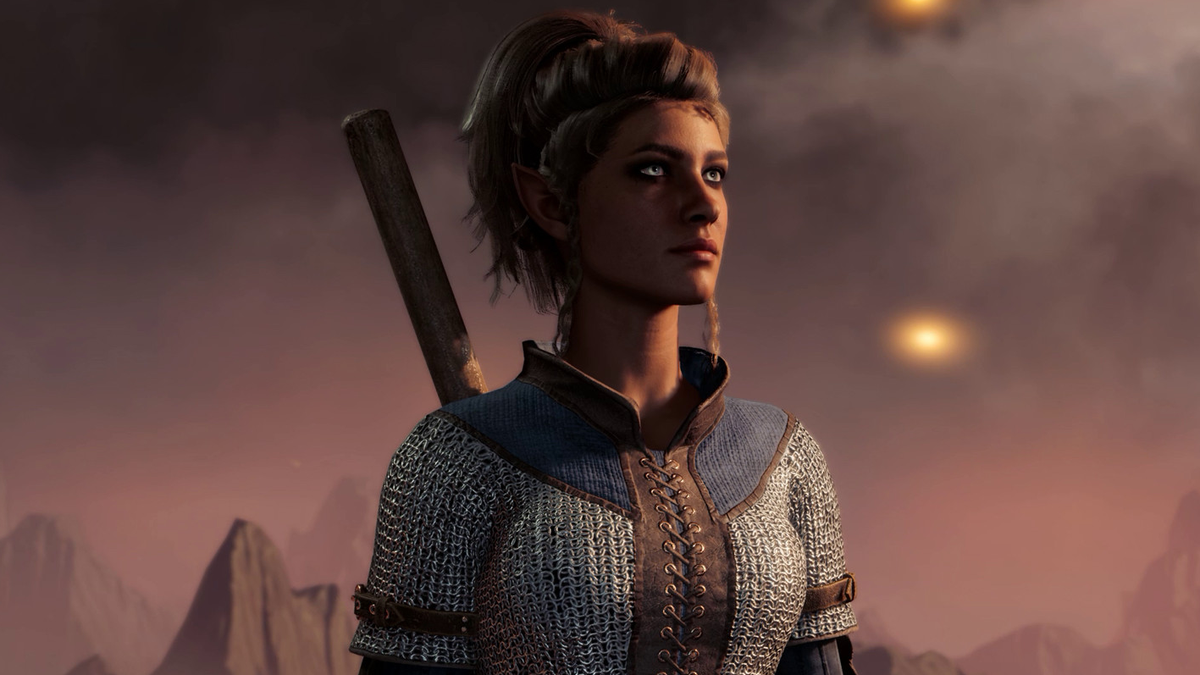Baldur’s Gate 3 opens, like its Bioware predecessor, with a titanic clash between two of the most powerful beings in the Forgotten Realms. On the bridge of an airborne slave ship screaming through the first layer of the nine hells, a mindflayer captain grabs a devil by the horns and, wrapping long tentacles around the victim’s head, sucks brain through bone.
High on nutritious grey matter, the captain turns to its next opponent: Commander Zhalk, a towering soldier whose flaming longsword illuminuates the membrane of his bright orange wings.
Then Zhalk spots us gawking in the doorway. “Throw their corpses in the Styx,” he roars, directing a trio of imps to take care of my fledgling party.
With all of 30 minutes’ battle experience, I don’t fancy my chances against veterans of the eternally raging Blood War. What I do have, though, are arms. I pick up the nearest imp corpse splayed on the deck, and lob it at one of my attackers. Though the animation is simple, I imagine my character spinning like a shot put champion before release. The bodies collide, and now there are two imp corpses.
There’s deep satisfaction to be found in weaponising game environments, though it’s hard to put a finger on why. I suppose there’s a daft drama to it—the videogame equivalent of overacting, using the whole space to create as much noise as possible. Only you’re not just chewing the scenery, but spitting it out at opponents. Then there’s the fact that environmental kills tend to be overpowered, which makes them not just hammy, but cheesy—a delicious and indulgent grilled sandwich of interaction.
The fact is, shooting an enemy is a little basic—a matter of drawing a straight line from one entity to another, and making the second disappear. It’s one of the first things game designers figured out how to do. By introducing an extra point along that line—whether that’s a limp imp, or a vase, or a boulder—the hit becomes a trick shot, something to show off about. Today’s games are built on complex physics engines and filled with breakable items; why not use them?

That said, this is not a completely new phenomenon: PC gaming has a long and entertaining history of improvised weaponry. This year I replayed Deus Ex, and challenged myself to find as many indirect methods of dispatching foes as possible. At first it was tricky to overcome an ingrained want to sneak and evade. Before long, though, I was basically Wile E Coyote: pushing a TNT crate from a high vent into a locker room filled with soldiers, so that it cracked open on impact with the floor; defeating a major antagonist by chucking a settee from the mezzanine floor of her penthouse onto her head as she stood in the lounge.
Using props as weapons speaks to the spirit of PC gaming.
Eventually, some of my schemes took advantage of limitations in the AI—as when I donned a hazard suit to push a damaged, leaking gas drum across a lab until it sat under the nose of an augmented man in black. Since I wasn’t personally attacking the MIB, he didn’t find issue with my strange behaviour—taking damage until he keeled over. His death triggered an explosive self-termination mechanism that took out half the lab in a fireball, which in turn blew open the gas drum and took care of his colleagues. I’m as proud of this cheese-laden mouse trap as I would be any noscope kill in COD.
Yes, it did occur to me that I might have a problem—notably when I found myself on the roof of a New York hotel with an armchair, two garbage cans and a flag pole, in order to test out the effects of varying heights and weights on the patrolling enemies in the streets below. But it seems to me that using props as weapons speaks to the spirit of PC gaming—to outwit, to overthink, and to push at the edges of the systems we’re given.

There’s a ranged attack in Baldur’s Gate 3 called Pin Down, which effectively glues an enemy in place. It strikes me that its target is very much the exception, since almost nothing in the game is pinned down. As in the Divinity games, Larian makes every spade, skull and skeleton key an object you can pick up and place in your inventory. And unlike Divinity, the new game has a ‘throw’ command on its UI—so that you can take any object out of your inventory and bounce it off the bonce of a nearby enemy.
Within minutes of play, my old sickness had reemerged, and I was excitedly collating the possibilities with friends on WhatsApp. Was an intellect devourer—essentially a brain on legs—small enough that you could pick it up and throw it off a moving ship? Yes. Could you throw a living devourer at another devourer, damaging them both? Yes. Truly, two heads are better than one.
If PC gaming is about optimisation and perfect builds, you could argue that what I’m doing is the opposite—creating spectacles of inefficiency, wasting my hours pursuing the route of most resistance. But silly as it is, killing an enemy in a roundabout way with a part of the scenery makes me feel fuzzy, because I did that, and probably no one else has. I took a bag of systems and arranged the pieces into something unique—and what’s more PC gaming than that?













